Are you looking to explore the best National Parks in Alabama? We have you covered with our list of the best national parks and monuments to visit in Alabama.
Alabama is home to some of the most important Civil Rights movements and historical sites. There are 9 National Parks, Monuments, Trails and Preserves throughout the state.
Each place is steeped in history from clashes with Native Americans at Little Canyon Preserve and Trail of Tears, to monumental Civil Rights historical events at Freedom Riders Monument and Selma to Montgomery Trail to learning about civilization starting in 10,000 BC at Russell Caves to educational museum at the Birmingham Institute many of the Alabama National Parks have free admission and are must when visiting the state.
If looking for Airbnbs while exploring the National parks in Alabama check our suggestions for magical places for glamping and other homes and cabins.
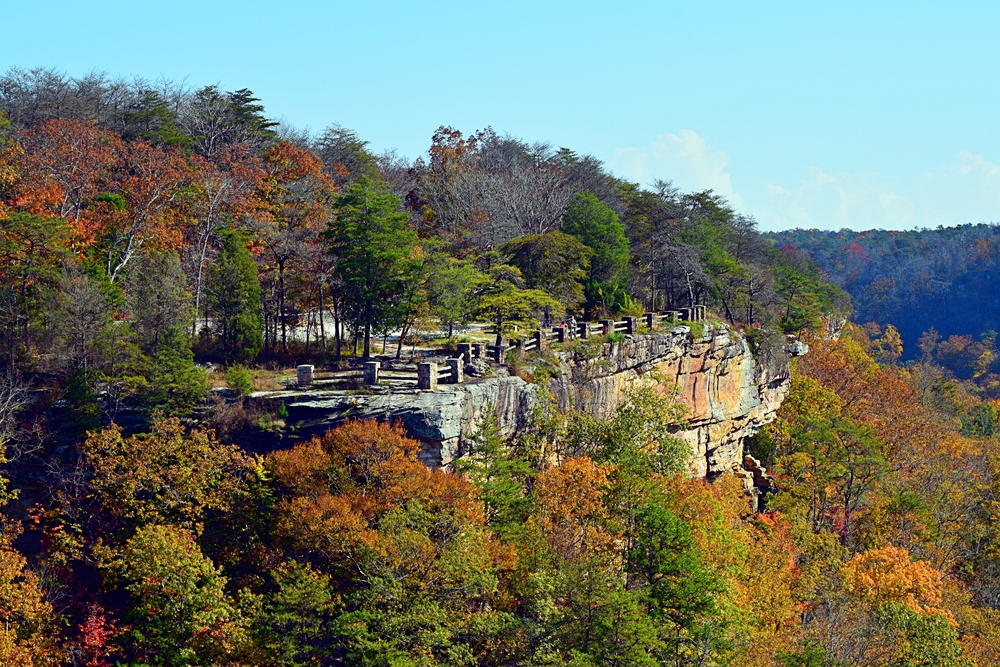
10 Best National Parks In Alabama To Explore
Birmingham Civil Rights Institute
The Birmingham Civil Rights Institute is a museum and research center that focuses on an educational and cultural understanding of the Civil Rights Movement. Opened in 1992 it was a great educational option for those looking for National Monuments in Alabama. Located in the historical district right across from Kelly Ingram Park this is a must visit when in the area.
The museum is over 58,000 square feet that houses galleries, archives, and a rotating exhibits. Transport yourself back to a segregated 1950’s Birmingham, watch a 12 minute film about Birmingham, board a replica Freedom Riders bus, see the jail door of Martin Luther King’s cell where he penned Letters from Birmingham or learn from the myriad of Civil Rights documents housed throughout the museum.
From historical timelines through the 1950’s and 1960’s to personal stories and accounts, to exhibits it aims in showing the racial injustice of the time in an informative way.
Make sure to check out our list of the best cities and small towns in Alabama for inspiration on where to visit next!
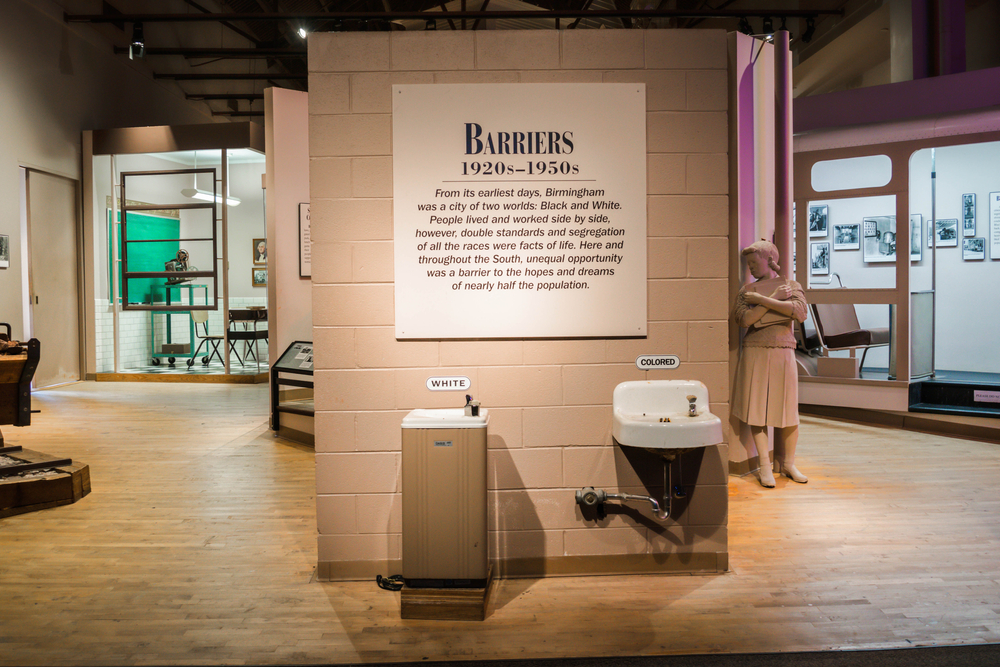
Freedom Riders
The Freedom Riders is one of the National Monuments in Alabama focused around the 1961 Civil Rights event that fought for equality that spurred the government to ban segregated interstate travel. Here you will learn how 400 interracial freedom fought for equality.
One of the newest National Parks in Alabama established in 2017 by President Barack Obama at the former Greyhound station in downtown Anniston where the Freedom Riders were attacked in May of 1961 on a journey from Washington DC to New Orleans.
The other site is the Bus Burning Site just 6 miles outside the city on the Old Birmingham Highway where the segregationist mob attacked and burned one of the buses brining national attention to the Civil Right movement.
You can take a self guided driving tour of the Anniston Civil Rights and Heritage Trail of both these monuments as well as the Memorial Hospital and Trailways Station – the place the second Freedom Riders bus departed from.
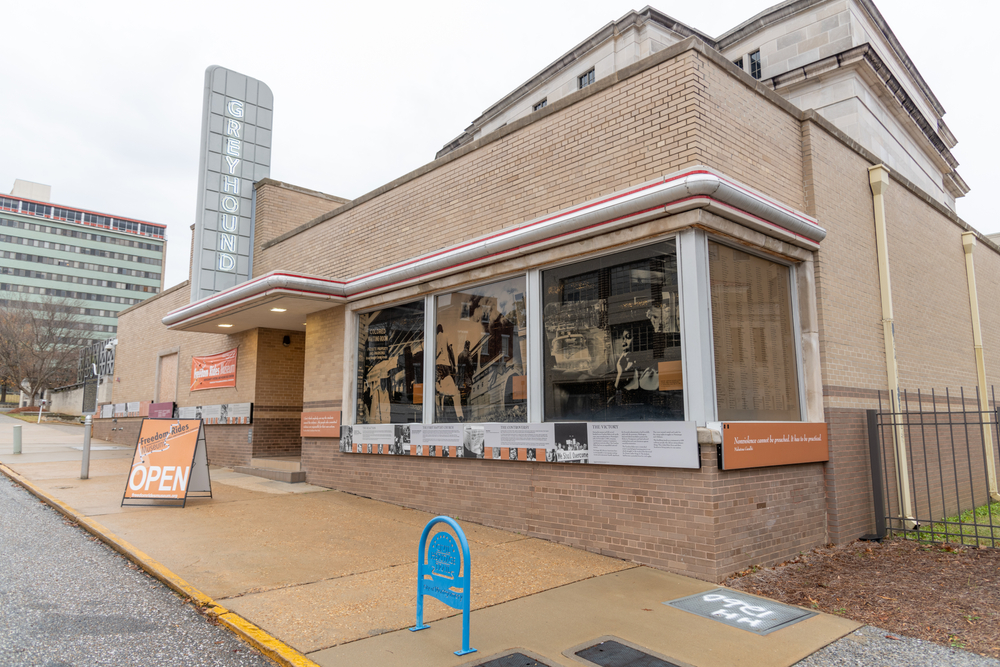
Horseshoe Bend Military Park
Horseshoe Bend is on the Alabama National Parks list as a national military park that is the site of the last battle of the Creek War that took place on March 27, 1814. Open daily from 8 am to 5 pm, and admission is free!
This National Park holds historical importance as it was where the Native American Creek tribe conceded to General Andrew Jackson. Over 3,000 men of Jackson’s Army attacked the 1000 members of the Creek Tribe at the “horseshoe bend”.
Over 800 Creek’s died that day and led to the the Treaty of Fort Jackson being signed in August of 1814. The ceded over 23 million acres including the land that is now Alabama and Georgia to the United States.
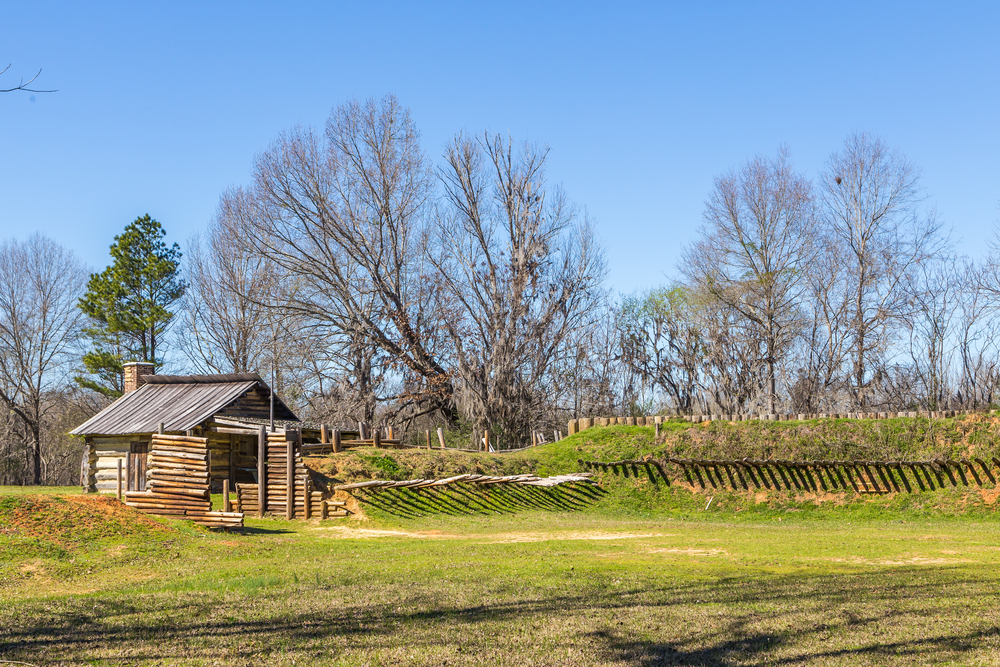
Little River Canyon Preserve
Locate in northeast Alabama, Little River Canyon Preserve is one of the Alabama National Parks. The river is unique because it flows atop Lookout Mountain, and is known for its plethora of outdoor activities in the southern Appalachians mountains.
If you are looking to enjoy the outdoors in Alabama this is the place to head. From seeing beautiful waterfalls, over 26 miles of hiking rails along the river, into the canyon, or just woodland strolls to fly fishing at Canyon Mouth Park as well as 23 miles of bike trails and horse trails.
While this is a National Park, camping is not permitted inside the park. The park is open daily from sunrise to sunset. A daily pass is $15 or you can purchase and annual pass for just $35! The machine takes Cash Only so please remember that! Or free if you have an American the Beautiful Park Pass!
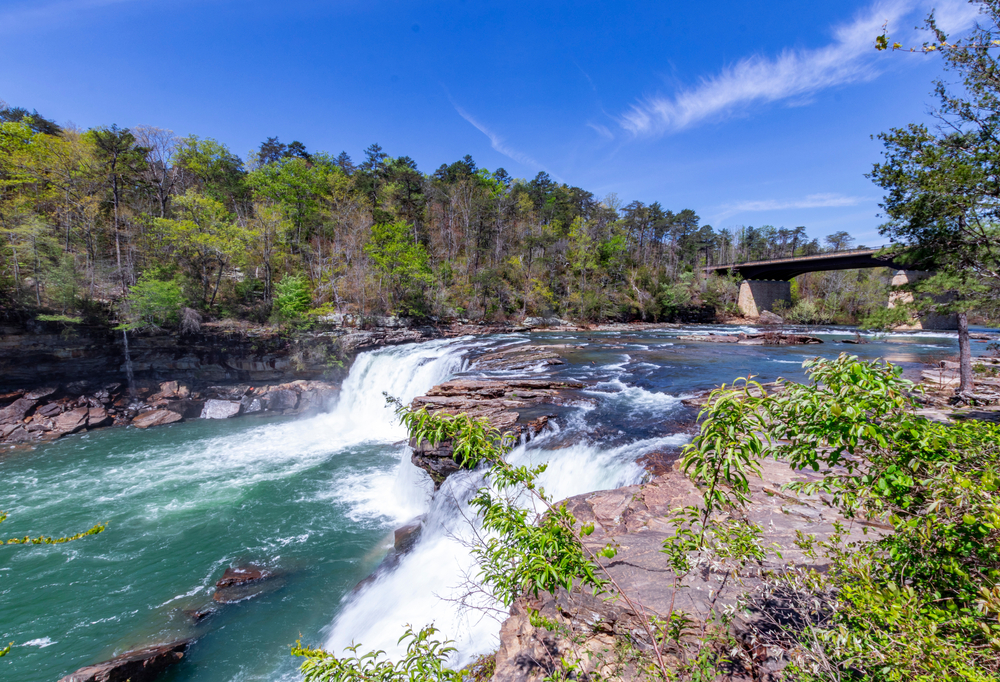
Natchez Trace Scenic Trail
The Natchez Trace Scenic Trail is open daily from sunrise to sunset and there is no fee to enter. You can enter a variety of entrances throughout Alabama as well as other states. There are five sections of the Natchez trail that you can enter.
The scenic trails are intended to showcase Alabama’s and Mississippis beauty, and there are over 100 miles of trails to explore. The Alabama section covered over 33 miles and crosses over the Tennessee River. You will be on the Florence-Tuscumbia section of the trail.
At mile marker 338 you can find the Wichahpi Commemorative Stone Wall that is the largest un-mortared stone wall in the nation. At mile marker 320 you will find Tuscumbia the birthplace of Helen Keller and the Alabama Music Hall of Fame and spring park complete with a music mountain and a spring-led lake.
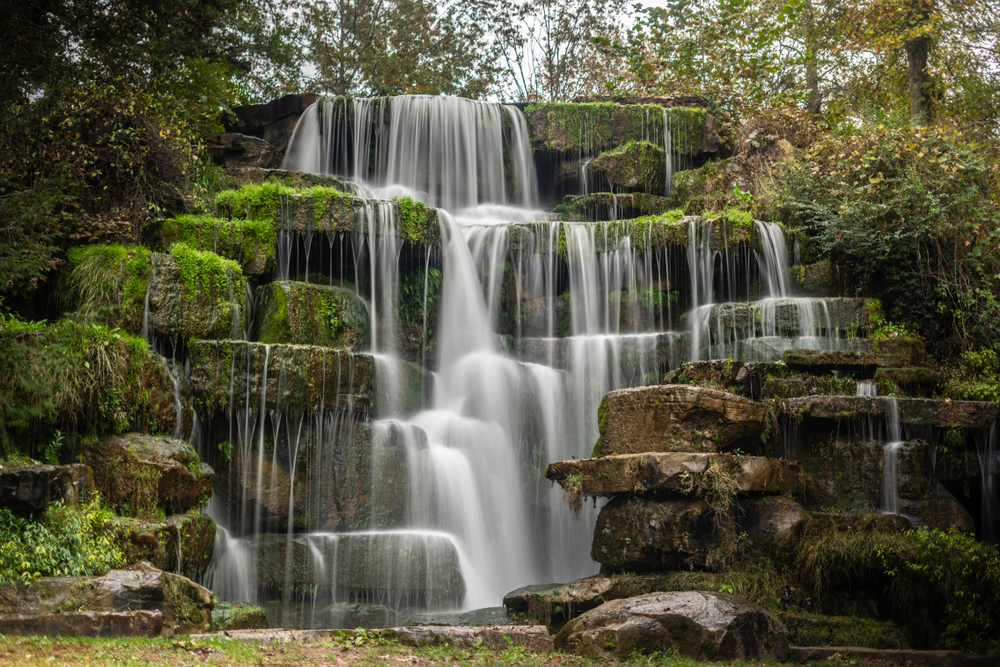
Russell Cave National Monument
Russell Cave is one of the National Monuments in Alabama that is an archeological site with prehistoric cultures. Located outside Bridgeport, the cave shelter is of the largest records of prehistoric culture dating from 10,000 BC to 1650 AD. It shows the development of humans living during the archaic and paleo periods in Alabama.
Open daily from 8 am to 4:30 pm and does not have an entry fee! Established in 1961 by President Kennedy the park is vital to protecting and understanding the transition of human life in the area. The Russell Cave was actually Alabamas only national monument!
It is one of the National Parks in Alabama that is great for learning about how archeology teaches us about history! Excavation began in 1953, and the cave was first used prior to European contact as a hunting camp, and later as a family dwellings of different groups of tribes over a period of time.
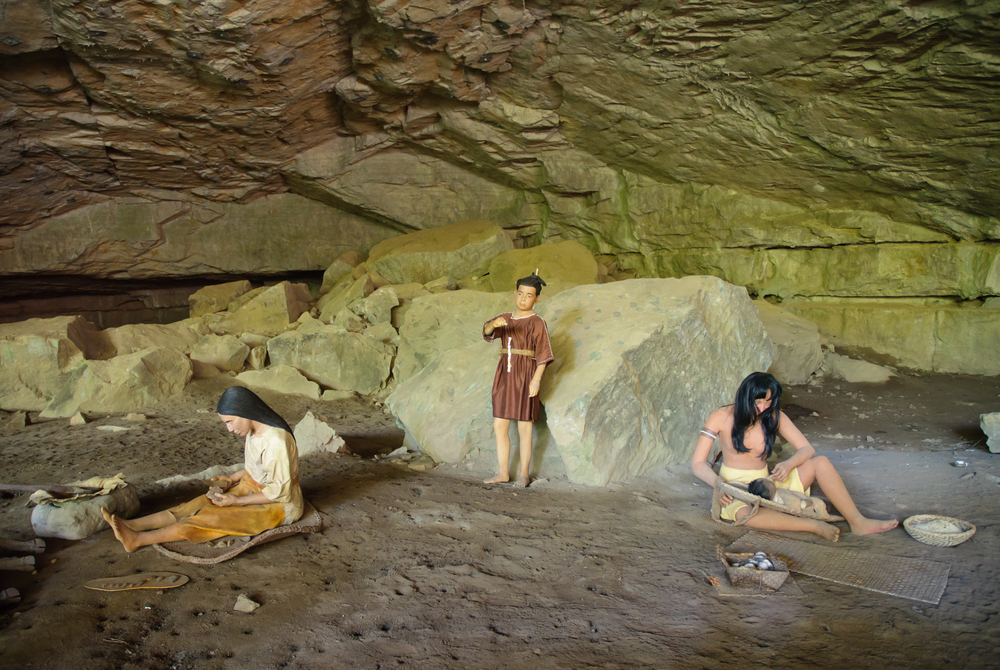
Selma to Montgomery National Historic Trail
The Selma to Montgomery National Historic Trail follows the exact path taken by the voting marches in 1965. It was Congress who established the Historic trail in 1996, was a pivotal moment in the Civil Rights movement, led by Dr. Martin Luther King caters sought for the right to vote in Alabama.
The 54 mile trail is well marked and follows the path along roadways from Selma to Montgomery. The first march began on March 7, 1965 across the Edmund Pettus Bridge where law enforcement officers beat protesters is what is known as Bloody Sunday.
The third and final march began on the morning March 21st under the protection with interference of sheriffs office and state troopers. Over 4000 marchers departed from the Brown Chapel AME church in Selma and over 4 nights along the trail ended at the State Capital in Montgomery on March 25th.
It was this Selma to Montgomery march that brought national attention to voting right struggles, and where Dr. Martin Luther King gave his speech Our God Is Marching On and put pressure on President Johnson to pass the Voting Rights Act in 1965.

Trails of Tears
The Trail of Tears or Journey of Injustice is an important Alabama National Park with a dark history. Called the Trail of Tears by the Cherokee nation, the trail marks the area where over 17,000 Native Americans were forced to leave their homes throughout Georgia, Tennessee, and Alabama. In 1831, the United States government took over the land in the Indian Removal Act. The trail runs from Fort Payne to Guntersville Lake.
The trail hopes to educated the public by preserving these sites and give the history of what happened in our history, not only the good but the bad. Over 25% of those forced from their land who decided to leave did not survive the relocation to Oklahoma where the Cherokee nation is now 3330,000 strong.
By 1835, a Cherokee Nation group that remained in Alabama was forced to sign the Treaty of New Echota and three years later in 1838 the US government forcibly removed the remaining Cherokee members.
It was under General Scott that Cherokee members were rounded up and imprisoned. Some were sent down the Tennessee River while some were marched under harsh conditions and over 4000 lost their lives during this removal.
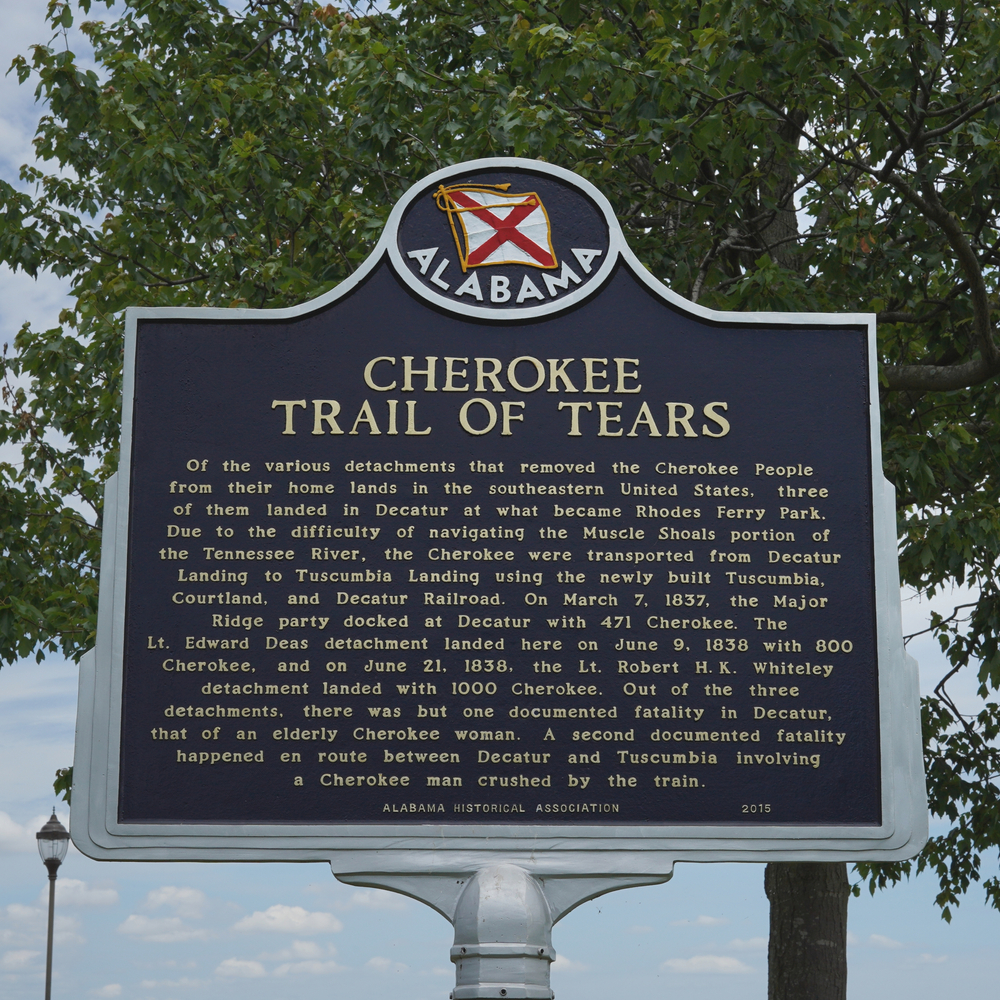
Tuskegee Airmen National Historic Site
Like most on this Alabama National Parks list the admission is free to visit the Tuskegee Airmen National Historic Site. Named a National Park by President Clinton in 1998 it aims to show the commemorate the role the Tuskegee airman played. The hangers are open Monday to Saturday from 9 am to 4:30 pm.
What started out as an experiment by then President Roosevelt in 1940 the Tuskegee program trained over 14,000 African Americans. The Tuskegee Airmen were the first African American military pilots referred to as red tails. You can take a tour of Hanger 1 that serves as a museum explaining the training program for Tuskegee airmen – not only pilots but all who worked out of this airfield.
They learned to fly as well as work on and operate planes at Moton Field in Tuskegee Alabama. Flying over 15,000 missions during World War II they were integral in helping to integrate the armed forces on July 26, 1948.
In Hanger 2 you will learn about the men who flew in combat mansions, and also see a replica red tail P-51 plane! You will learn about the discrimination the Tuskegee airmen received both before, during and after World War II. Make sure not to miss the 27 minute film that proves real footage, interviews and more!

Natchez Trace Scenic Preserve
The Natchez Trace Scenic Preserve is a 444 mile parkway and scenic route through the “Old Natchez Trail” a historic Native American travel corridor through the states of Alabama, Mississippi and Tennessee. It follows the route of the oldest “road” in the United States use by European Settlers, slave traders and soldiers.
The Preserve runs from Natchez to Nashville and is comprised of 5 different sections known as Potkopinu, Rocky Springs Trail, Tockanookany Trail, Blackland Prairie Trail and Highland Rim.
While an enjoyable scenic drive, there are over 60 miles of hikes along 4 different trails from Rocky Springs, Tupelo, Ridgeland and Leipers Fork trails with plenty of historical sites to stop at along the trail.
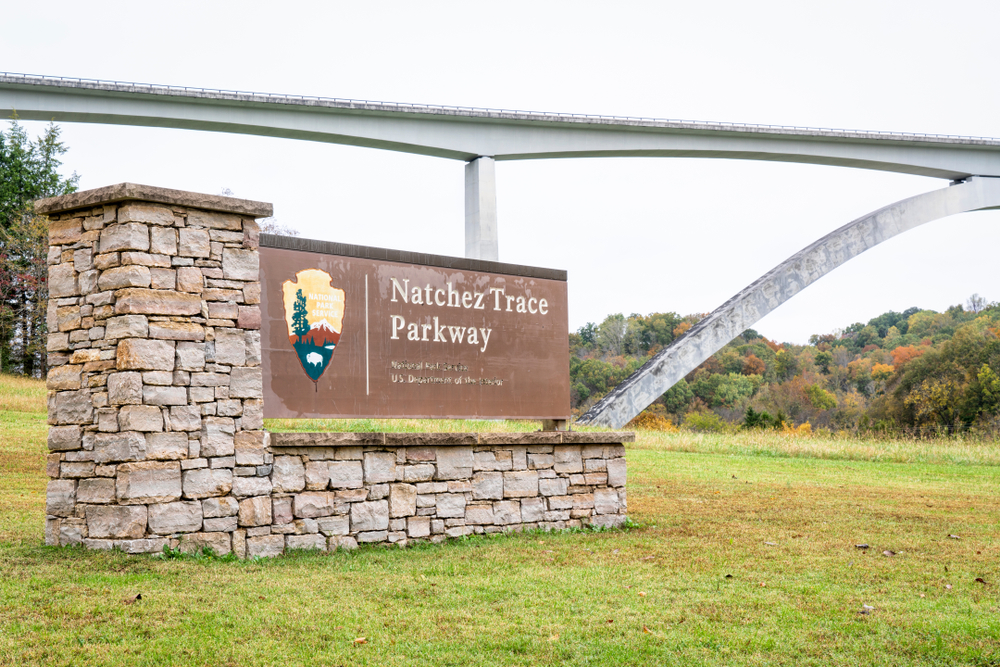

 15 Fabulous Weekend Getaways In North Carolina
15 Fabulous Weekend Getaways In North Carolina